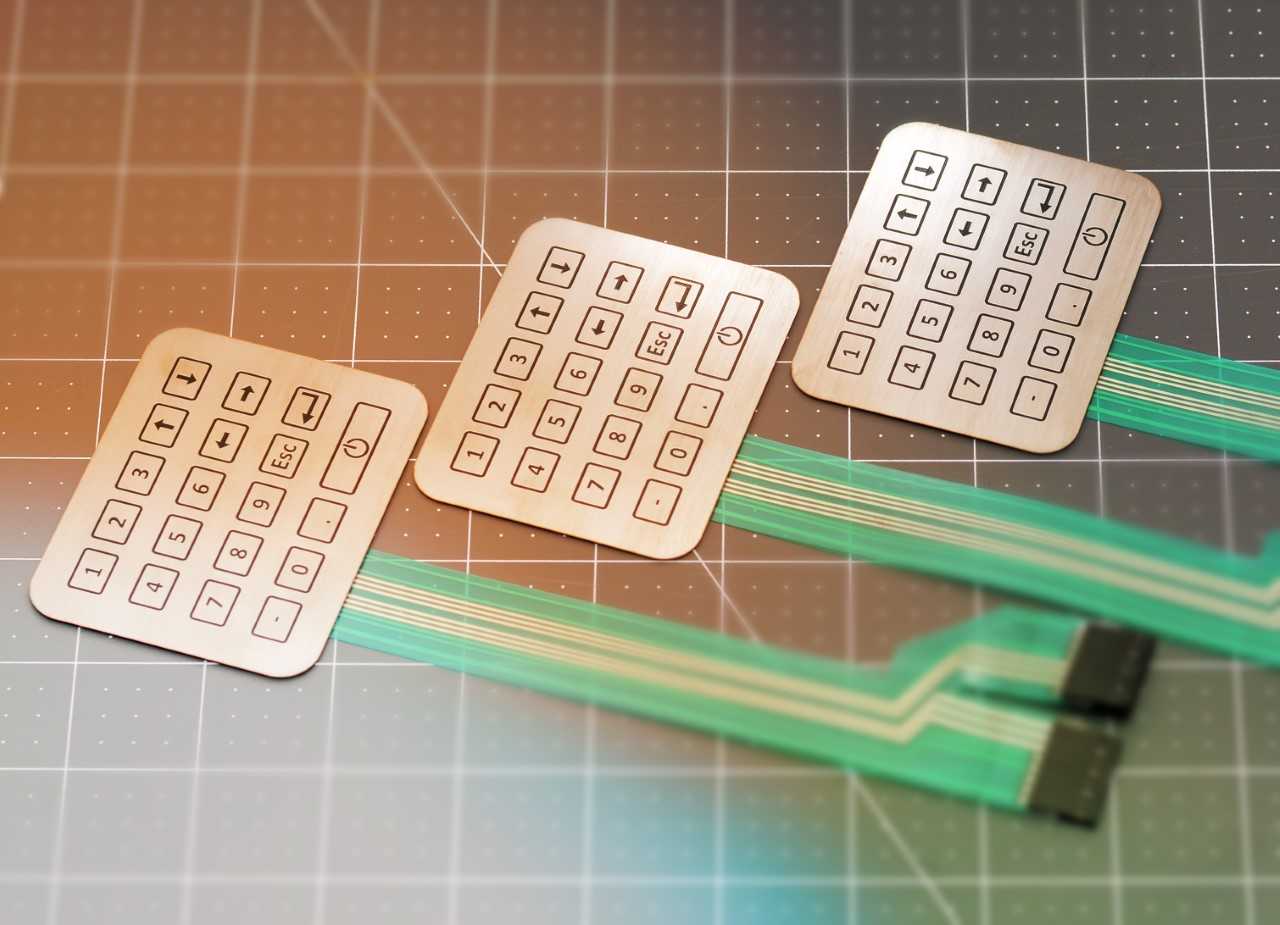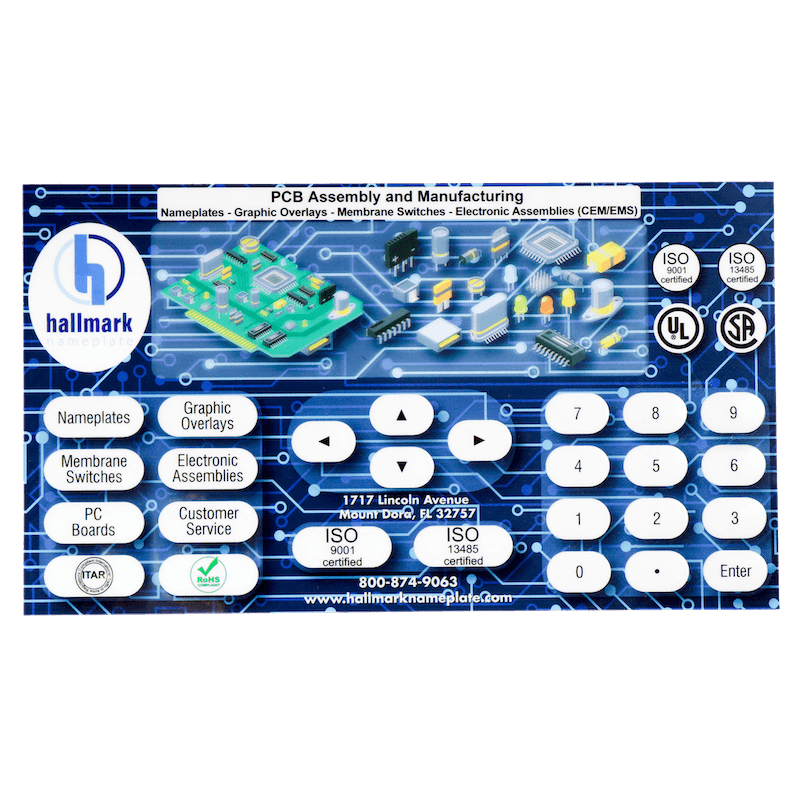Membrane Switch: Reliable, Cost-Effective, and User-Friendly Control Systems
Membrane Switch: Reliable, Cost-Effective, and User-Friendly Control Systems
Blog Article
Understanding Membrane Layer Changes: The Key to Resilient and Reputable Controls

What Are Membrane Layer Switches?
Membrane buttons are an advanced solution in the world of user interface modern technology, integrating capability and design flawlessly. These devices act as a user interface in between users and electronic systems, incorporating a number of elements into a small style. Typically built from versatile, slim layers of products, membrane layer switches are designed to reply to touch, enabling customers to connect with equipment and digital devices successfully.
The key components of a membrane switch include a printed circuit layer, graphic overlay, and a spacer layer that prevents unplanned activation. The graphic overlay can be personalized to show brand name identification or customer choices, improving aesthetics while making certain functionality. Membrane switches are typically used in various applications, consisting of clinical devices, customer electronics, and industrial equipment, owing to their durability and resistance to environmental factors such as wetness and dirt.
One of the vital advantages of membrane layer buttons is their capability to stand up to deterioration, making them optimal for high-traffic settings. In addition, they are light-weight and require minimal area, permitting for cutting-edge designs in item development. On the whole, membrane layer changes represent a efficient and practical selection for modern-day electronic interfaces, marrying modern technology with user-centric style principles.
Exactly How Membrane Layer Switches Job
The operation of membrane switches joints on a simple yet reliable mechanism that equates customer input into electronic signals. When an individual presses the switch, the leading layer flaws, enabling a conductive component in the circuit layer to make contact with an equivalent conductive pad on the bottom of the graphic overlay.
The layout of membrane buttons can differ, but they often incorporate domes or tactile elements to offer feedback to the customer, improving the total experience - membrane switch. The products utilized in membrane layer buttons, such as polyester or polycarbonate, add to their longevity and resistance to ecological factors, consisting of wetness and dust. Furthermore, the printed circuits are generally enveloped, which protects them from wear and tear with time.
Benefits of Membrane Switches

Additionally, membrane buttons are recognized for their durability. Created from durable products, they are resistant to dust, dampness, and physical wear, which dramatically prolongs their life expectancy compared to typical mechanical buttons. This longevity makes them specifically ideal for high-traffic settings and applications requiring longevity.
An additional considerable benefit is the ease of cleansing and maintenance. The smooth surface area of membrane switches over decreases dirt buildup and is frequently invulnerable to spills, important source making them ideal for setups that call for frequent sanitization.
Furthermore, membrane switches offer a streamlined account, causing a thinner style that can be integrated right into different tools without adding mass. This function not just improves the aesthetic appeal but additionally adds to an extra ergonomic product layout.
Applications of Membrane Buttons
Straightforward and flexible, membrane layer buttons discover applications throughout a vast array of markets, consisting of medical gadgets, consumer electronic devices, and industrial tools. In the medical area, these switches are indispensable to gadgets such as diagnostic tools, client surveillance systems, and mixture pumps, where dependability and ease of cleansing are important. Their ability to withstand rough environments and maintain performance makes them optimal for such applications.

In customer electronic devices, membrane layer switches are used in products like microwaves, cleaning devices, and remote controls - membrane switch. Their smooth layout permits user-friendly interface, boosting the general individual experience while supplying toughness and resistance to tear and use
Commercial equipment likewise profits from membrane buttons, specifically in control panels for machinery and automation systems. These switches provide defense against dirt and dampness, guaranteeing constant efficiency in challenging environments. Additionally, their personalized attributes enable manufacturers to customize them to details functional requirements, improving performance and performance.
Selecting the Right Membrane Layer Switch
When selecting a membrane switch, it is crucial to take into consideration various elements that affect performance and viability for details applications. The key factors to consider consist of environmental problems, tactile feedback, durability, and design specs.
First, assess the operating atmosphere; switches subjected to moisture, chemicals, or extreme temperature levels need details products to ensure durability and functionality. Next off, examine the need for responsive responses. Depending on customer interaction, some applications may take advantage of a tactile reaction to validate activation, while others might like a non-tactile layout for visual factors.
Durability is another important element; membrane layer buttons need to be created to withstand constant use, influences, and abrasion. Ensure the selected switch can withstand the expected lifecycle, especially in high-usage scenarios.

Verdict
In conclusion, membrane layer changes function as essential parts in the style of long lasting and reliable control systems across different sectors. Their small design, incorporated with robust building and construction and customizable functions, enhances individual communication while visite site guaranteeing longevity in demanding settings. The flexibility of membrane layer switches over permits tailored services that satisfy details operational needs, enhancing their value in contemporary innovation. As markets continue to develop, the value of integrating his comment is here reliable membrane layer switch remedies can not be overemphasized.
Membrane changes stand for an important aspect of modern interface layout, mixing functionality with durability in various applications.Membrane layer buttons are an innovative service in the world of individual interface innovation, combining functionality and layout perfectly. Usually built from adaptable, slim layers of products, membrane buttons are created to respond to touch, making it possible for individuals to connect with equipment and digital tools properly.
The layout of membrane layer switches can differ, yet they frequently integrate domes or responsive aspects to provide responses to the customer, boosting the general experience.In final thought, membrane layer switches over offer as essential parts in the design of reputable and long lasting control systems across numerous markets.
Report this page